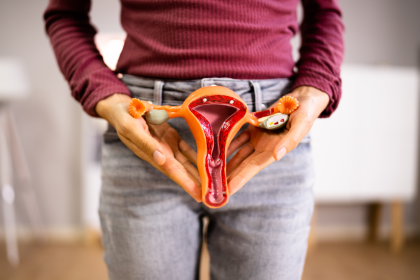You don’t need to run marathons or do intense HIIT workouts to maximize fat burning. The secret to doubling your fat-burning potential might be as simple as adjusting your walking speed to hit the perfect metabolic sweet spot that most people completely miss.
This walking speed that doubles your fat burning is based on science, not fitness marketing hype, and it’s something anyone can achieve regardless of their current fitness level.
The magic number is 3.5 to 4 miles per hour
Research consistently shows that walking at 3.5 to 4 miles per hour puts most people in their optimal fat-burning zone. This translates to about 15-17 minutes per mile, which feels like a brisk walk where you’re moving with purpose but can still hold a conversation.
At this pace, your body preferentially burns fat for fuel rather than relying primarily on carbohydrates. You’re working hard enough to elevate your heart rate and metabolism, but not so hard that your body switches to burning mostly sugar for quick energy.
This speed hits the sweet spot where your body can efficiently access stored fat and convert it to energy for sustained periods without triggering the stress response that can actually inhibit fat burning.
Why this pace is metabolically perfect
When you walk at 3.5-4 mph, you’re working at approximately 60-70% of your maximum heart rate for most people. This is known as the aerobic zone or fat-burning zone, where your body has enough oxygen to efficiently break down fat cells for energy.
At slower speeds, you’re not creating enough metabolic demand to significantly increase fat burning above your resting rate. At faster speeds, your body starts relying more heavily on carbohydrates because fat takes longer to convert to energy than stored glucose.
This moderate intensity allows your body to maintain fat burning for extended periods without the metabolic stress that comes with high-intensity exercise, which can actually decrease fat burning efficiency.
The oxygen factor
Fat burning requires oxygen to work efficiently. When you walk at the optimal pace, your breathing increases enough to provide plenty of oxygen for fat metabolism, but you’re not gasping for air like you would during intense exercise.
This aerobic state allows your body to efficiently break down fat molecules through a process called beta-oxidation, which requires oxygen to convert stored fat into usable energy. Without adequate oxygen, your body can’t efficiently burn fat and switches to less efficient energy sources.
The walking speed that doubles your fat burning keeps you in this oxygen-rich zone where fat metabolism can work at its peak efficiency.
Duration matters as much as speed
While the 3.5-4 mph pace is optimal, you need to maintain it for at least 30-45 minutes to maximize fat burning. Your body typically uses stored carbohydrates for the first 15-20 minutes of exercise before switching to fat as the primary fuel source.
This is why short, fast walks don’t burn as much fat as longer, moderately paced walks. The magic happens when you sustain the optimal pace long enough for your body to fully transition into fat-burning mode.
Many people make the mistake of walking too fast for shorter periods, thinking they’re working harder, but they’re actually burning less fat than they would at a slightly slower pace for a longer duration.
Your personal fat-burning zone
While 3.5-4 mph works for most people, your optimal fat-burning walking speed depends on your age, fitness level, and individual metabolism. A more personalized approach is to aim for 60-70% of your maximum heart rate.
Calculate your maximum heart rate by subtracting your age from 220, then multiply by 0.6 and 0.7 to find your fat-burning zone. For example, a 40-year-old would have a maximum heart rate of 180, making their fat-burning zone 108-126 beats per minute.
Use a fitness tracker or simply monitor your breathing — you should be able to talk but feel like you’re working. If you’re huffing and puffing, slow down. If you feel like you could easily sing, speed up.
The compound effect
Walking at this optimal pace doesn’t just burn fat during the exercise — it creates metabolic effects that continue after you finish. This moderate-intensity exercise can keep your metabolism elevated for hours afterward, a phenomenon known as excess post-exercise oxygen consumption.
Additionally, regular walking at this pace improves your body’s ability to burn fat even at rest by increasing the number and efficiency of mitochondria in your muscle cells. These cellular powerhouses are where fat burning actually happens.
Common mistakes that kill fat burning
Many people walk too slowly, thinking any movement is good enough, but they’re missing the metabolic benefits of the optimal pace. Others walk too fast, thinking more intensity equals more fat burning, but they’re actually shifting their body into carbohydrate-burning mode.
Inconsistency is another fat-burning killer. Walking at the optimal pace once or twice a week won’t create the metabolic adaptations needed for maximum fat burning. You need to hit this pace regularly to train your body to become a more efficient fat burner.
Making it sustainable
The beauty of this walking speed that doubles your fat burning is that it’s sustainable for most people. You don’t need special equipment, expensive gym memberships, or hours of recovery time. You can maintain this pace for extended periods without the joint stress or exhaustion that comes with high-intensity exercise.
Start with 30-minute walks at this pace three times per week, then gradually increase frequency and duration as your fitness improves. The key is consistency rather than perfection.
Beyond the numbers
While the 3.5-4 mph pace is scientifically optimal for fat burning, the best walking speed is ultimately the one you can maintain consistently. Some fat burning is always better than no fat burning, so find a pace that feels challenging but sustainable for your current fitness level.
Remember that fat burning is a gradual process that requires patience and consistency. This optimal walking pace gives you the best chance of success, but results come from regular practice over time.
Bottom line? The walking speed that doubles your fat burning is 3.5-4 miles per hour, maintained for at least 30-45 minutes. This pace puts you in the optimal fat-burning zone where your body can efficiently convert stored fat to energy without the metabolic stress that comes with intense exercise.
















